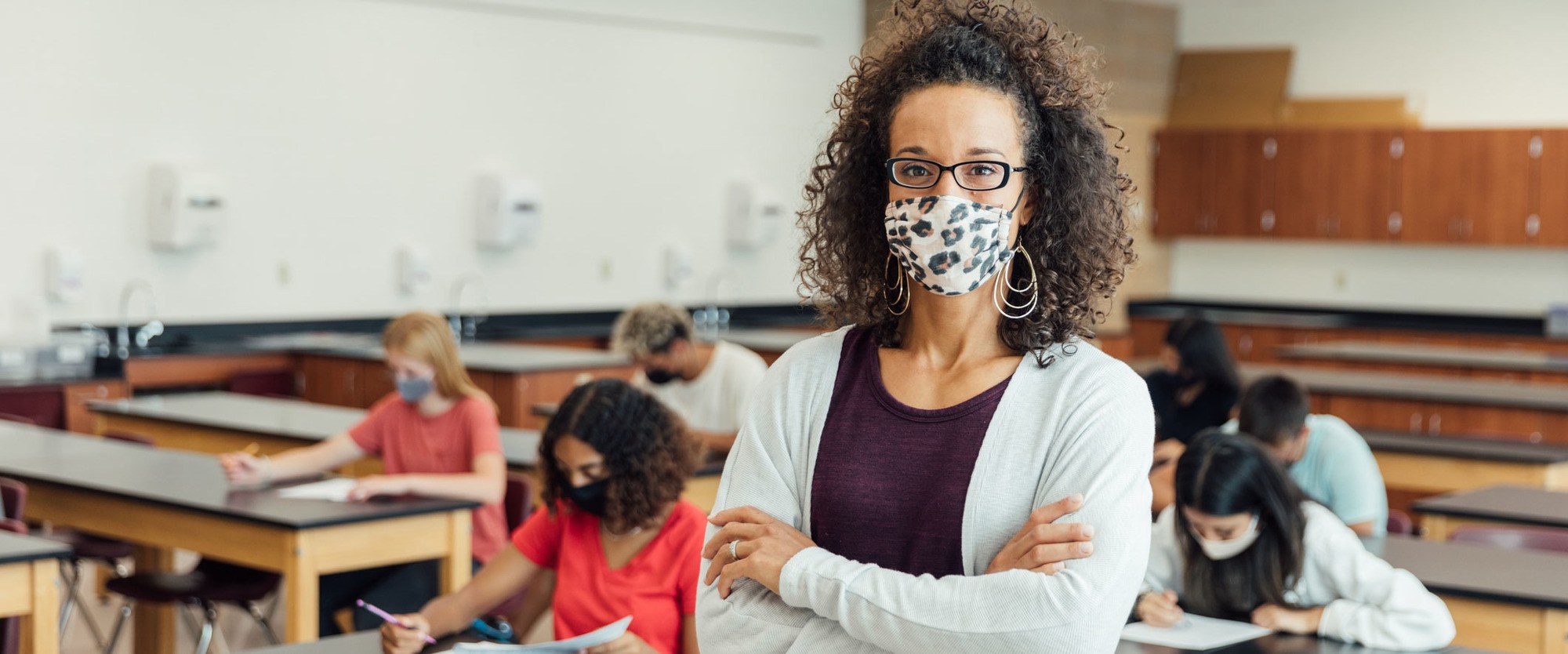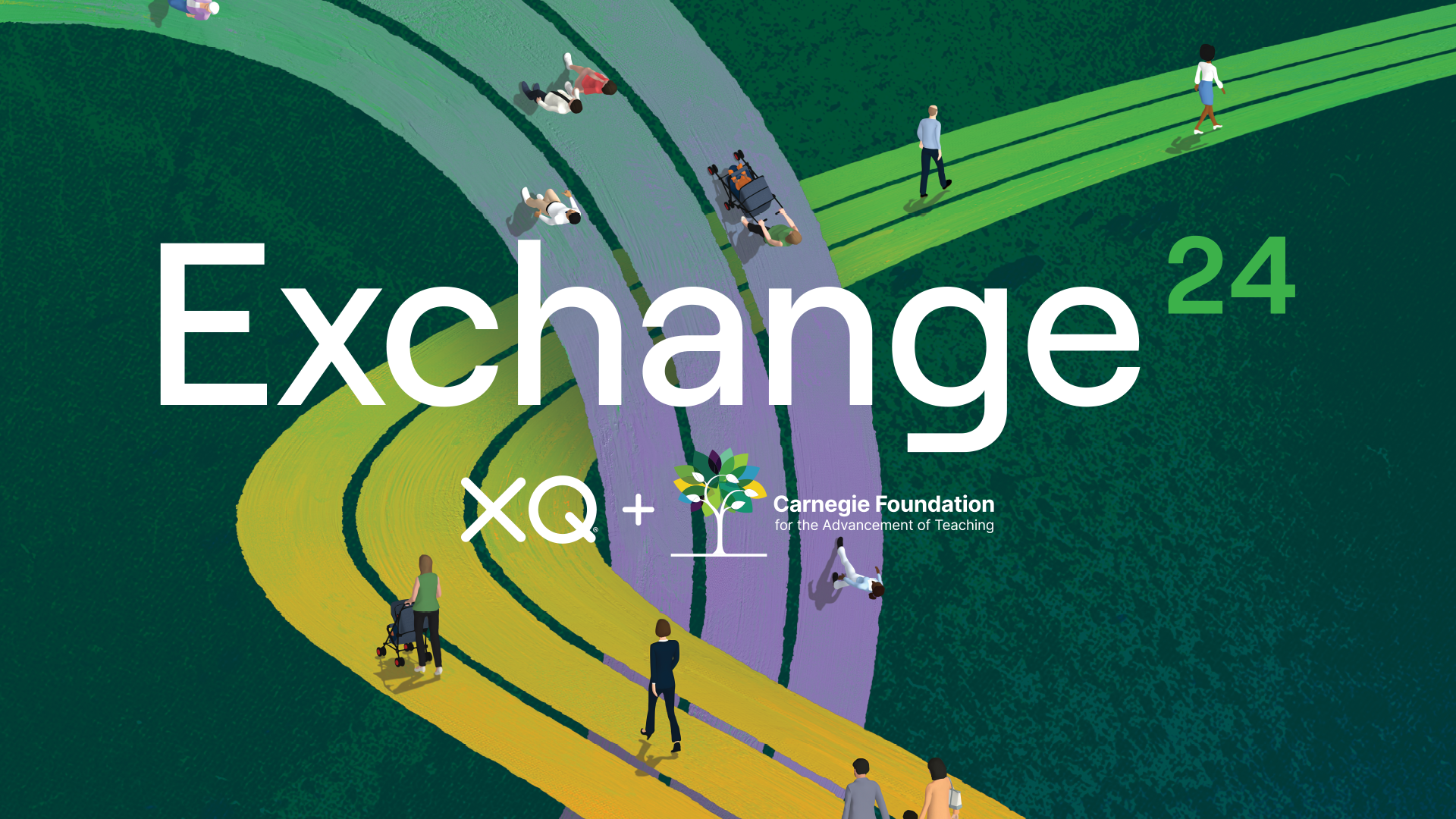This High School Is Sharing How to Make Remote Learning Work for Every Student
These school leaders created a model for students to adapt and thrive even during a pandemic. Here’s how.

Schools across the country are grappling with how and when to reopen their buildings safely. But with the help of its families, a lot of creativity, and existing learning systems already in place, Brooklyn Laboratory Charter School (Brooklyn LAB) created a model to adapt—and even thrive—in the face of a pandemic.
Brooklyn LAB is adapting to this new world in real time, giving their students a first hand look at how to be resilient and flexible in a time of uncertainty. The transition to school reopening is a true lesson in perseverance and resilience—for every aspect of the Brooklyn Lab community—and helps further Brooklyn LAB’s mission of creating “Learners for Life.” Students are exploring how they can use this time to build skills that will help them in college, career, and life, and work collaboratively to make new futures possible.
Bringing out a New ‘Us’
“This crisis has brought out the real ‘us.’ We’re all about supporting our school community, first and foremost,” said Greg Rodriguez, high school director at Brooklyn LAB, an XQ School in New York City. “And right now, our students and families need us now more than ever.”
Brooklyn LAB, a middle and high school that predominantly serves low-income students of color, is also sharing its insights and resources online for any school to access for free.
Like most schools, Brooklyn LAB closed its campus in March as coronavirus spread across the country. But the school community immediately set about planning for reopening, examining how and when school reopening might happen and under what scenario.
They gathered input from students, families, teachers, and other team members, and consulted a wide array of health and education experts before coming up with a unique hybrid model that places equity and student voice at the center.
While many schools across the country remain closed, LAB reopened its campus on August 19. Students are now attending classes in small in-person groups in one of two shifts, whichever they prefer: from 8:30 a.m. to 1 p.m., or from 1:15 to 4:45 p.m.
Meeting in groups of no more than 15, students take their core academic classes—math, science, history, and language arts—in person. Other classes, including electives, they take online.
Students who don’t feel comfortable returning to campus can continue with an enhanced distance learning program that covers comparable skills and material their peers in the classroom are studying.
One advantage of having morning and afternoon shifts is that students can avoid public transit during the busiest times. In addition, the school can limit the number of people in the building, making social distancing easier.
Including Every Voice in Reopening
The system would not have been possible without the input from Brooklyn LAB families, said Kelly King, the school’s partnerships manager.
“We always knew we’d need family input and buy-in to make this successful,” said King. “We knew that if families don’t feel clear about and comfortable with our safety precautions, it was not going to work.”
The school hosted more than 150 focus groups, town halls, discussion sessions, and campus tours. They listened to families’ and students’ needs and concerns and tried to craft a plan that would keep everyone safe while also maximizing students’ opportunities to learn.
“We told our families, this is a 50-50 partnership,” said Jonathan Flynn, Brooklyn LAB’s manager of family and community affairs. “We can’t do it by ourselves. The way we see it, families are one of our community’s greatest assets and partners.”
The school’s multi-tiered response to the pandemic also drew from XQ’s Learner Goals— particularly “Original Thinkers for an Uncertain World.” Students who are collaborative, nimble, problem solvers that are comfortable with risks and accustomed to thinking big to adapt to a changing environment, at school and beyond.
Brooklyn LAB’s approach to the pandemic was not completely new: The school has prioritized family involvement since it was founded in 2013 by Eric Tucker and Erin Mote. The school has centered family voice—alongside student voice—since Day One.
Designing with Equity at the Forefront
Ultimately, Tucker said, equity was a driving force behind the school’s reopening process. “Listening to students and their families and including them in decisions is a crucial part of creating a school that uplifts all students, regardless of their backgrounds or income levels,” he said.
“The reality is, upper-middle-class families have multiple options this fall. We wanted to give all students at our school a range of meaningful options,” he said. “From an equity perspective, this is about making families’ needs and concerns our top priority.”
Here are some of the resources that Brooklyn Lab has made available to all schools:
- Success Coaching Playbook outlines how adults can help students reach their full potential during the pandemic and other crises.
- Public Schools Facilities Planning in the Era of COVID-19 is an overview posted on Getting Smart about Brooklyn’s Lab’s efforts to adapt to school reopening.
- Back-to-School Facilities Toolkit is a practical guide to Covid-19 safety precautions on campus.
- Instructional Programming Schedule Map shows how to create hybrid schedules.
- Back-to-School Learner Identity and Agency Guidebook is a general look at how students can build resilience and independence, and navigate personal challenges.
- COVID-19 Equitable Response Open Iconography Library is a collection of more than 350 downloadable icons related to school safety.
A Competency-Based Education that Meets the Moment
Brooklyn LAB is also well-suited for this moment in another way: the school has long embraced elements of competency-based education, a style of teaching and learning that focuses on students’ knowledge and mastery of material, as well as skills and dispositions—not on rote memorization or how well they do on standardized tests.
Competency-based education has important advantages for distance learning because it focuses on students’ individual progress, empowering them with the tools and agency to learn at their own pace.
Flexible and adaptable, competency-based education may look different in every classroom and is increasingly popular as a way for schools to boost student achievement and engagement, particularly with a lens to equity.
Eliot Levine, research director at Aurora Institute, said that many schools that use a competency-based approach have reported a smoother transition to the shifts in learning required by the pandemic.
In general, they have:
- Transparent, specific, common, and rigorous expectations for students already in place
- A system which allows students to work at different paces, moving ahead when they have demonstrated mastery
- A well-developed online learning management system that allows students, families, and teachers to easily track students’ progress and access learning materials
- Experience with asynchronous learning
- An ethos that promotes student agency and ownership of their learning.
“Competency-based education has some key elements that are beneficial for remote learning,” said Levine, who writes the institute’s CompetencyWorks blog.
Even schools that have not adopted CBE can use the pandemic as an opportunity to begin shifting in that direction, he said. It requires a transformation of an entire school or district, but the changes typically occur over several years.
“It’s a new way of thinking, but schools don’t need to make all the changes at once. It’s a multi-year progression,” he said. “We believe competency-based education is going to serve a large number of students better than the traditional system.”
Competency-based education also prioritizes the trusting relationships between teachers and students. At Brooklyn LAB, that’s been a critical part of the reopening plan, especially as students and their families grapple with challenges that stretch far beyond school closures. Some families are facing unemployment or economic adversity, the trauma and grief of losing loved ones to COVID-19, and the stress that’s arisen from the nationwide focus on racial injustice.
The staff at Brooklyn LAB has been acutely aware of these realities as it plans for the fall semester and beyond.
“This is an incredibly stressful and challenging time for all Americans,” Rodriquez said. “That’s why it’s so important we put a stake in the ground and provide our families with what they need: Normalcy, continuity, and community.”
Be sure to read Brooklyn LAB’s founder explain why he’s giving his school meaningful options this fall and find out why you should too.
From Aurora Institute, here are some resources on competency-based education:
Reports
- What Is Competency-Based Education? An Updated Definition
- Designing for Equity: Leveraging Competency-Based Education to Ensure All Students Succeed
- Education Policy Issues for the COVID-19 Era: Policy Actions and Responses to Leverage the Moment for Future Readiness
Blog Posts
- Competency-Based Education Across America
- Transitioning and Sustaining Competency-Based Education During School Closures
- Silver Linings: Observations of Self-Directed Behavior in an Online Environment
- Competency-Based District Leaders on Managing Change During the Pandemic









